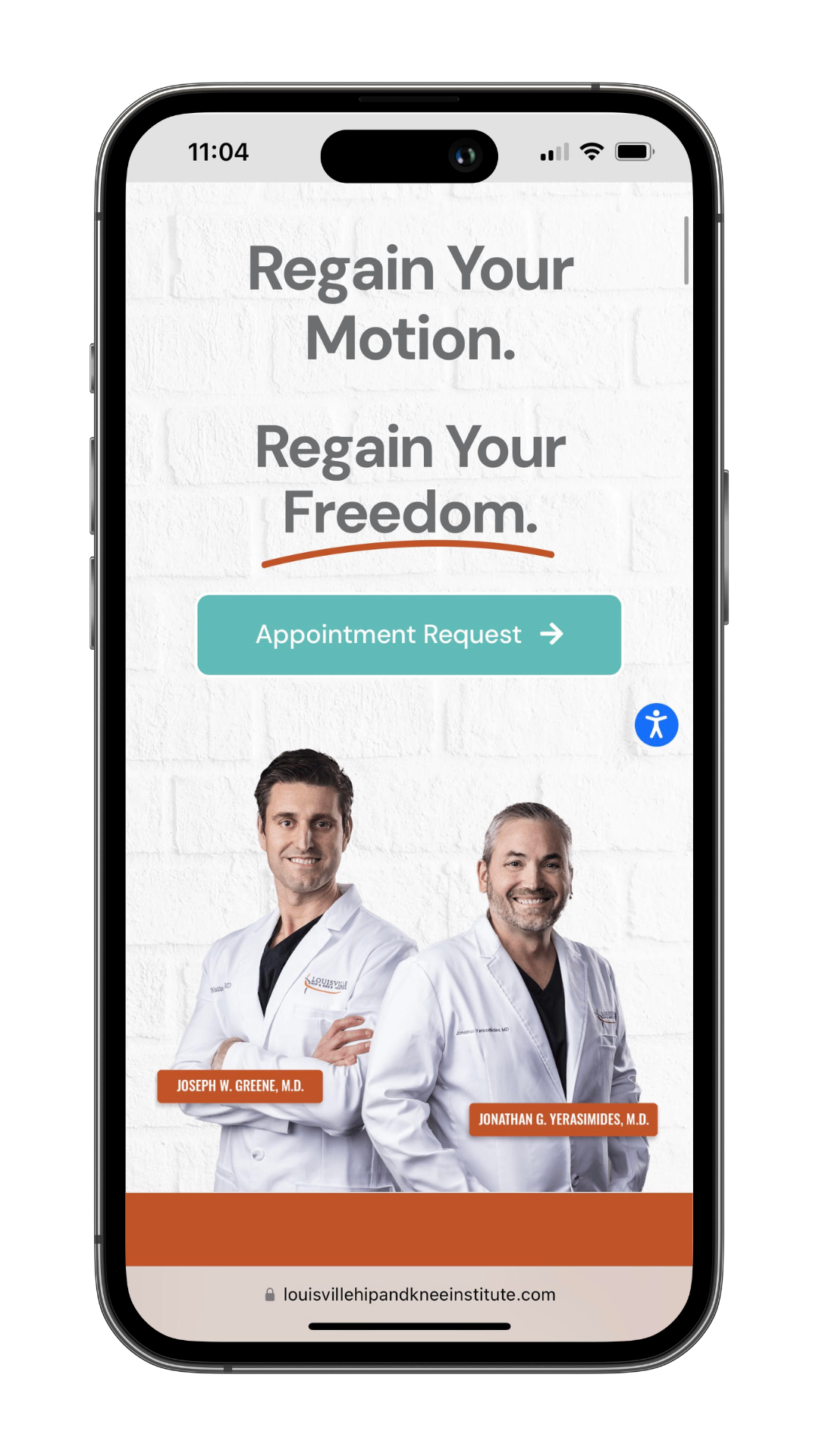
This practice’s mobile-optimized website automatically changes orientation to display correctly on any screen.
Did you know many visitors arrive at your website via a mobile device? Is your website designed to be simply navigated from a phone or tablet and to convert appointments?
We’ve seen that, on any given month, mobile devices account for up to 40% of internet traffic for our clients. Your website and appointment request forms must be available whenever and wherever your potential patients are to remain competitive in today’s mobile-ready environment.
Take out your smartphone and search for the website of your practice. What spied on you? Could you locate your website within the initial set of search results? Was your website optimized and scaled correctly when you visited it, or was it just a tiny, awkward copy of your desktop site?
According to a recent study by Morgan Stanley, 91% of smartphone users keep their devices by their sides all day. The likelihood is that both you and your next patient are among them.
Let us present a few statistics to help you understand the significance of your mobile presence. We live in a time where the number of smartphone owners exceeds that of non-owners, according to Nielson (2012). Furthermore, according to MobileLens, these smartphone users have made health information the mobile search category with the quickest growth rate. According to Google, 61% of mobile phone local searches end in a call. Do you get the gist now?
One more: according to a recent survey by Morgan Stanley, 91% of smartphone owners carry their devices by their sides all day. You and your next patient are probably among them.
What steps can you take to make your website mobile-friendly right now?
Verify That Your Company Profiles on the Major Search Engines Are accurate.
Claiming and keeping an eye on your profile on the many consumer search pages and online reputation management websites may be difficult. The list is endless: HealthGrades.com, Vitals.com, Yelp.com, and ZocDoc.com. Data is frequently reset, making it difficult to replace and manage it in real-time. What, then, should you do? One thing to remember from this essay is that you should claim your company listings as quickly as possible on the three main search engines (Google, Yahoo, and Bing). Like, this instant.
When someone uses their phone to search for your practice, advertisements and listings from these websites appear first. You can add videos, patient reviews, phone numbers, images, and hours to your placement on Google’s page. It functions as a complimentary mini-site; all you need to do is fill in the missing data. This is among the simplest, quickest, and most efficient strategies to increase your website’s online visibility.
Construct an Adaptable Web Page
Developing a flexible website is one of the best strategies to improve your mobile presence. This implies that your website will adapt its layout and size to fit the screen resolution of the device used to view it.
Put another way, this technology allows your website to automatically adjust its size for different devices, such as a desktop, tablet, or smartphone.
Nowadays, almost everyone is a member of at least one social network. Make it as simple as possible for users to share your material. It’s possible that a visitor came across a blog post you published about how to cure ear infections in children, which she can forward to her coworkers and other mothers. She will divulge, though, if you make it simple.
The process should take three clicks, from the share button through the social network option to the submit button. Though it’s a complicated process, remember that the more content users share, the more relevant your search results will be.
Recognize These Patients
Your present patients and those looking for your practice on their phones are the same. But the way you relate to them is entirely different. You still need to care for the mother of three who is ill with her son. However, if she’s using her phone to search for your information, she needs to know something immediately—she can’t rush between soccer practice and lunch.
This implies that the layout of your mobile website must be clear and straightforward to navigate. Your homepage should load in less than 5 seconds on a standard mobile data connection, and your phone number should be prominently displayed on your website. Your specialties should also be included close to the top of the website.
Consider yourself your patient’s advocate. What would you immediately want to see if you were waiting in line at Starbucks or a stoplight? This will assist you in structuring and designing your website to become one of your most powerful tools for attracting patients.
WebSights:
The DrMarketingTips Show’s Special Season into Mastering Websites
With 300+ episodes under our belt, the DrMarketingTips Show has been at the forefront of medical practice marketing, guiding practices like yours through the digital evolution. Now, we’re bringing together the best of our insights in a curated season: WebSights. Each episode is designed to offer actionable strategies, from understanding ADA compliances to mastering SEO and crafting compelling content.
WebSights:
The DrMarketingTips Show’s Special Season into Mastering Websites
With 300+ episodes under our belt, the DrMarketingTips Show has been at the forefront of medical practice marketing, guiding practices like yours through the digital evolution. Now, we’re bringing together the best of our insights in a curated season: WebSights. Each episode is designed to offer actionable strategies, from understanding ADA compliances to mastering SEO and crafting compelling content.
